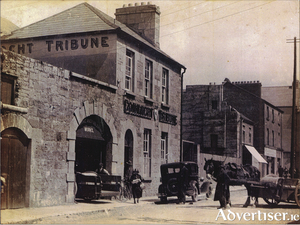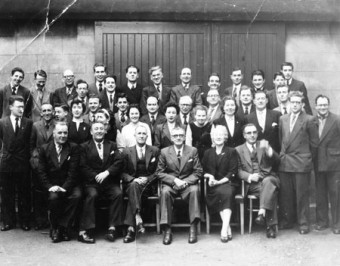Search Results for 'Chicago Tribune'
4 results found.
United manager Dunne expects signings next week
The Tribesmen suffered a disappointing 1-0 SSE Airtricity League Premier Division loss against Finn Harps at Ballybofey last Friday evening as Sean Houston’s second half strike was enough to earn the Donegal outfit three points. However summer reinforcements will arrive in the west soon, according to Dunne.
Local papers and their role in our history

In 1909 Galway was at a low ebb, the population was just over 3,000, the local economy was in poor shape, the canal and the docks were not being well used commercially, the student population of UCG was 131, there was very little manufacturing, and local politics was still bedevilled by the Parnell split. There were two local newspapers, The Connacht Champion which actively supported William Smith O’Brien MP and often virulently attacked the Irish Parliamentary Party, and The Galway Express which originally supported the conservative unionist viewpoint, but which gradually became more nationalist until its premises were wrecked in 1920 by the Black and Tans.
The Connacht Tribune, one hundred years
The first issue of the Connacht Tribune was published on May 22, 1909. The newspaper was housed in Market Street, originally known as North Street (the Tribune side was known as North Street West). We know from the 1651 map that the site it occupied was originally part of the Athy Castle, also the castle belonging to the French family and part of the convent occupied by the Poor Clares. There was an underground passage from the convent running under Market Street and branching underground to St Nicholas’ Collegiate Church. This enabled the nuns who were and are an enclosed order, to attend services in the church, and to use the tunnel as a hiding place in times of persecution.
The Connacht Tribune, one hundred years

The first issue of the Connacht Tribune was published on May 22, 1909. The newspaper was housed in Market Street, originally known as North Street (the Tribune side was known as North Street West). We know from the 1651 map that the site it occupied was originally part of the Athy Castle, also the castle belonging to the French family and part of the convent occupied by the Poor Clares. There was an underground passage from the convent running under Market Street and branching underground to St Nicholas’ Collegiate Church. This enabled the nuns who were and are an enclosed order, to attend services in the church, and to use the tunnel as a hiding place in times of persecution.

